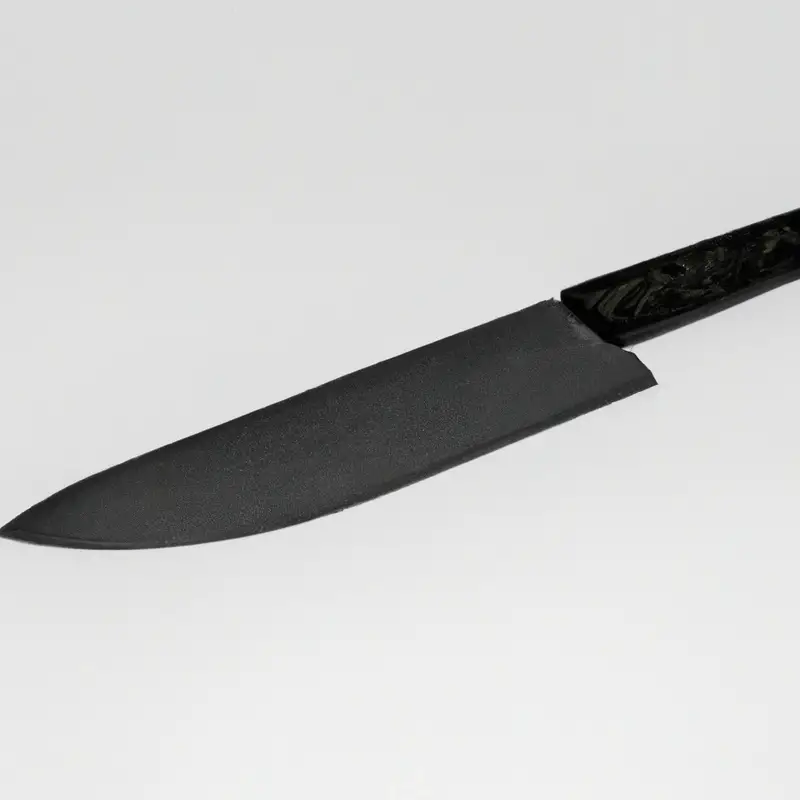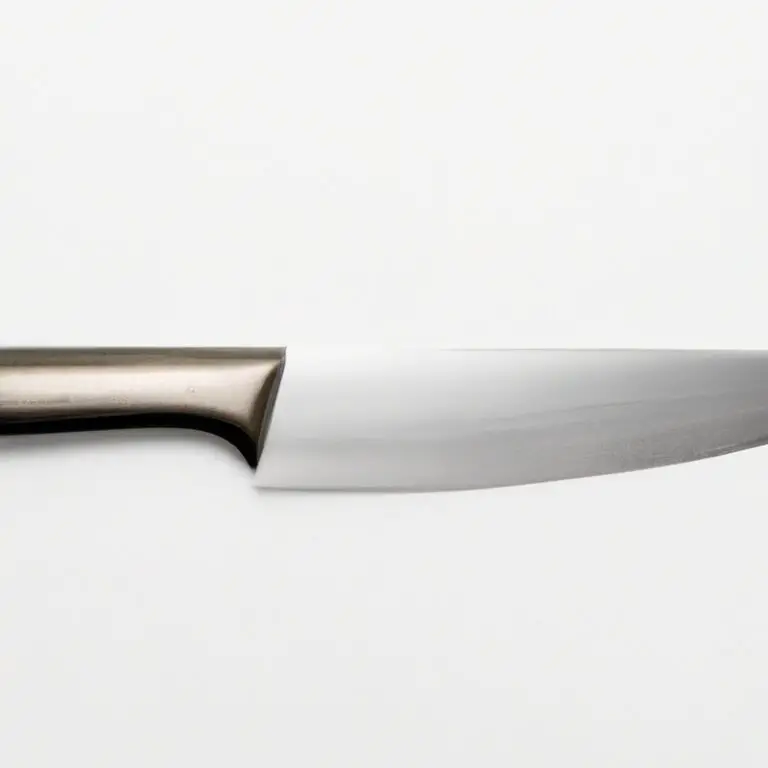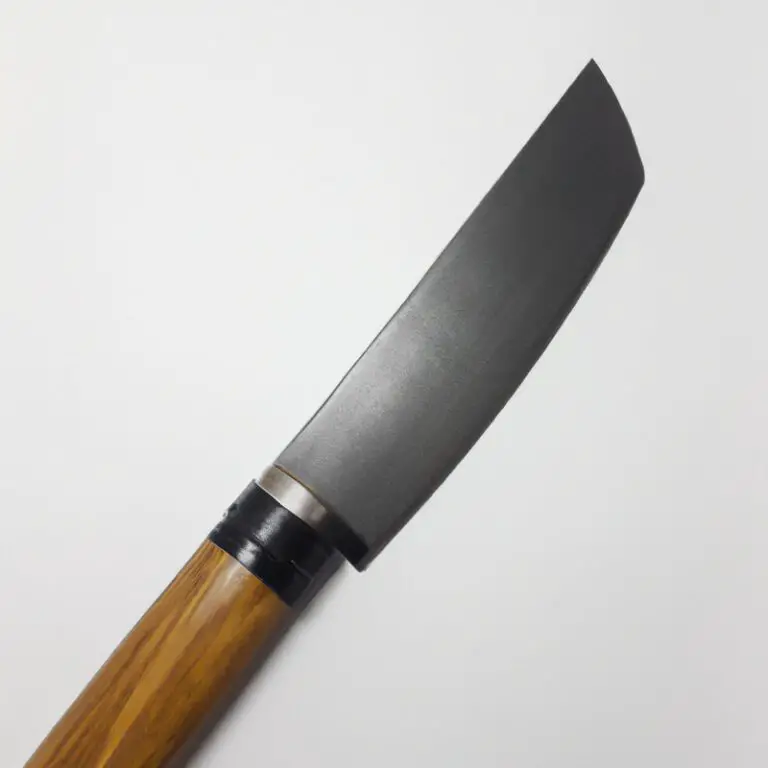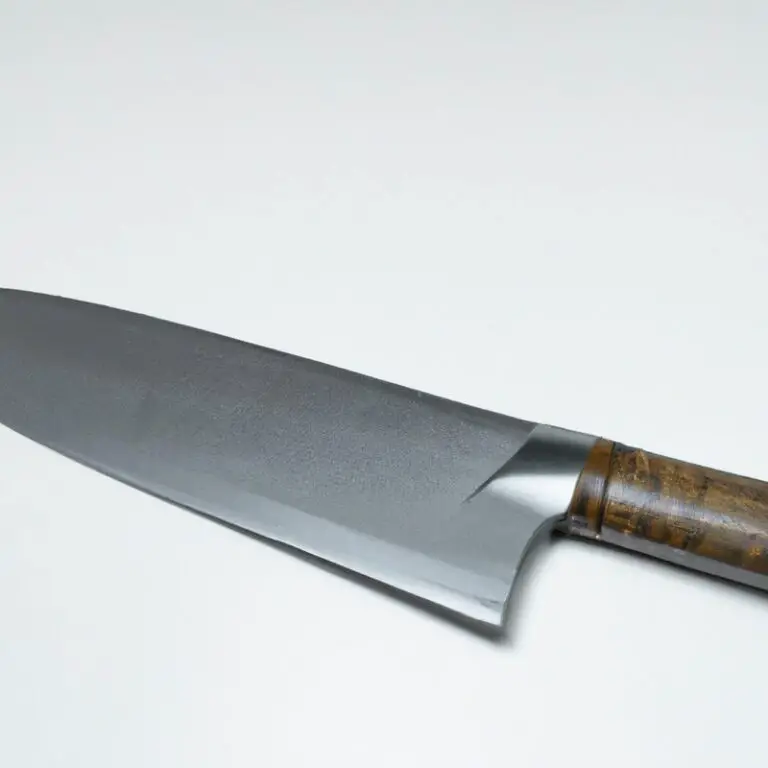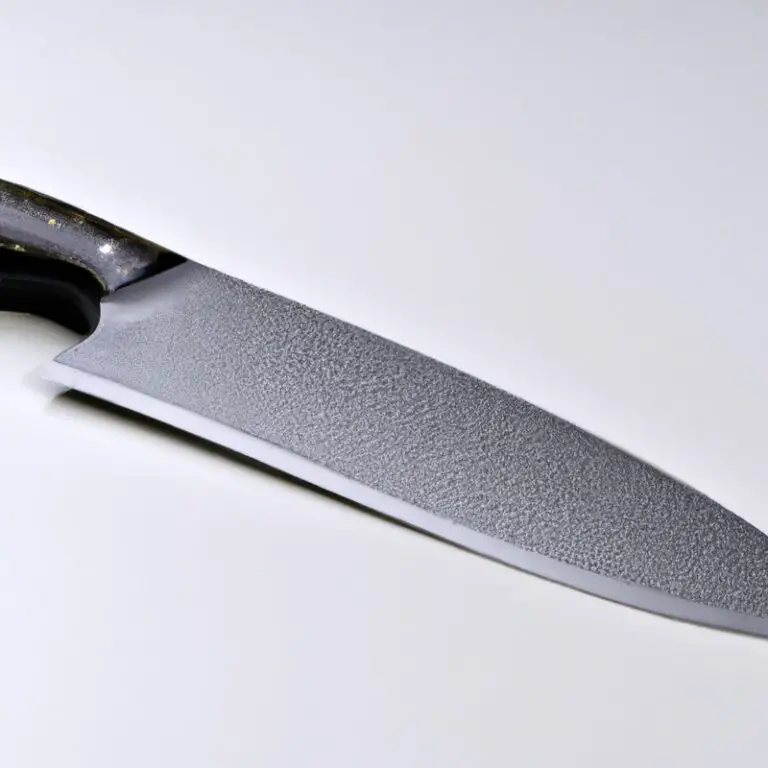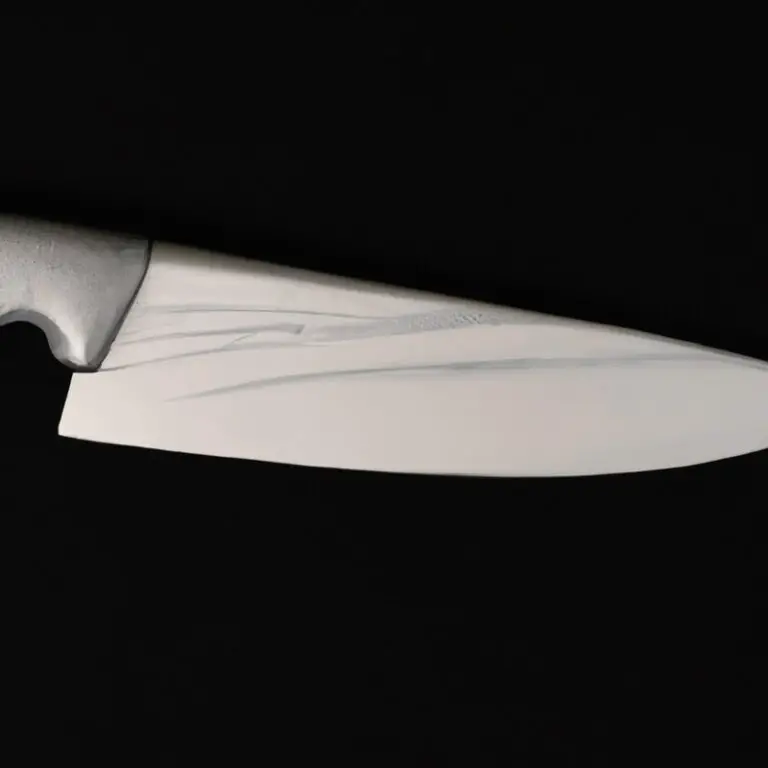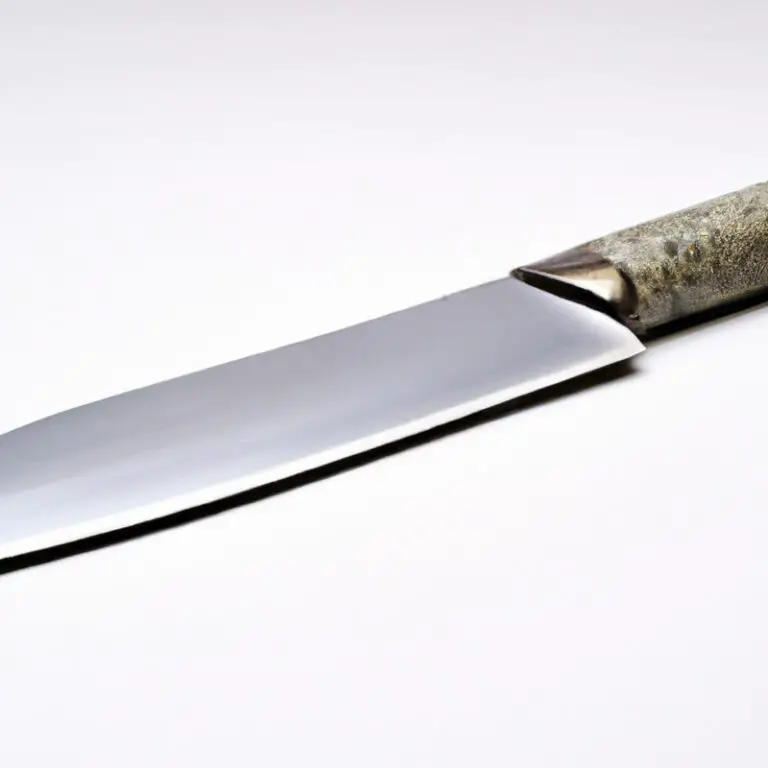How To Protect The Handle Of a Gyuto Knife From Damage? – Expert Tips!
Key Takeaways:
- Invest in a protective cover or sheath to prevent damage to the handle of your Gyuto knife.
- Avoid leaving your knife immersed in water or cleaning chemicals, as this can cause the handle material to deteriorate.
- Consider choosing a Gyuto knife with a durable handle material, such as stabilized wood or plastic, for added protection against wear and tear.
- Regularly inspect and clean your knife handle to remove any buildup or dirt, which can accelerate damage over time.
As a chef or home cook, you know that a good knife is an investment. And a high-quality Gyuto knife is no exception – the versatile Japanese chef’s knife is known for its sharpness and precision.
But what about the handle?
Without proper care, a damaged handle can impact the knife’s overall performance and even make it unsafe to use. In this article, I’ll share tips on how to maintain and protect the handle of your Gyuto knife from damage.
We’ll cover common causes of damage, materials used in handles, DIY repairs, and more.
Keep reading to ensure your Gyuto knife stays in top shape for years to come.
| Tips | Description |
|---|---|
| Use a Knife Guard | A knife guard is a plastic or silicone cover that fits snugly over the blade and protects it from contacting other objects that can cause damage. It is an affordable and easy way to protect the handle of your Gyuto knife. |
| Store the Knife Properly | When your Gyuto knife is not in use, store it in a knife block or a knife magnet. Avoid storing it in a drawer where it can come into contact with other utensils. Proper storage will keep your knife handle safe from scratches and damage. |
| Avoid Rust and Corrosion | If your Gyuto knife is not made of stainless steel, make sure to keep it dry after each use. Rust and corrosion can damage the blade and the handle. Clean the blade thoroughly and wipe the handle dry with a soft cloth before storing it. |
| Use Cutting Boards Carefully | When using your Gyuto knife, always use a cutting board. Avoid cutting on hard surfaces such as granite or marble, which can damage the blade and the handle. Use a soft cutting board made of wood or plastic to protect the handle of your knife. |
| Handle with Care | Remember to always handle your Gyuto knife with care. Avoid dropping it or hitting it against other objects. Treat it with respect and it will last longer. |
Differences between Gyuto and other knives that affect handle protection
Gyuto knives typically have a thinner blade and lighter weight than other knives, making them more agile for precise cuts. However, this also means that the handle may be less durable and more prone to damage if not handled properly.
Compared to other knife handles made of wood or plastic, Gyuto knife handles are often made of denser materials like micarta, G-10, or carbon fiber to withstand the pressure.
When selecting a Gyuto knife handle, consider factors such as the material, grip, and balance for optimal performance. Additionally, proper handling and storage techniques as well as regular maintenance can prevent handle damage and prolong the lifespan of your Gyuto knife.
Importance of maintaining the handle for optimal performance
Maintaining the handle of a Gyuto knife is crucial for its optimal performance. The handle not only provides a secure grip but also balances the weight of the blade, making it easier to handle.
A damaged handle can affect the knife’s efficiency and pose a safety risk to the user.
Therefore, it is essential to keep the handle clean and free of debris and moisture to prevent damage. Regular maintenance of the handle involves wiping it down after each use, oiling it when necessary, and storing it in a dry place.
A well-maintained handle can extend the lifespan of a Gyuto knife and ensure its peak performance.
Common causes of handle damage and how to avoid them
Common Causes of Handle Damage and How to Avoid Them The handle of a Gyuto knife is just as essential as the blade itself. However, it is susceptible to damage, which can affect the knife’s overall performance.
Here are some common causes of handle damage:
- Moisture: Prolonged contact with moisture can cause the handle of a Gyuto knife to rot or warp. To avoid this, always dry the handle thoroughly after use and avoid soaking the knife in water.
- Heat: Exposure to extreme heat can cause the handle to crack, split, or warp. Avoid leaving the knife near a heat source or in a hot environment for an extended period.
- Impact: Dropping the knife or using excessive force can cause the handle to crack or break. Handle the knife with care, use a cutting board, and avoid using the knife for tasks it isn’t intended for.
- Chemicals: Exposure to harsh chemicals can degrade the handle’s material, causing it to warp or discolor. Avoid using chemicals on the knife handle and clean it with mild soap and water.
To avoid handle damage, always handle the knife with care, store it properly in a dry and cool place, and clean and dry the handle after use. Also, consider investing in a knife protector or using a sheath to protect the handle during storage and transportation.
Materials used in Gyuto knife handles and their properties
Gyuto knife handles are made from a variety of materials, each with its own unique properties. Some common materials used in Gyuto knife handles include wood, micarta, G-10, and stainless steel.
Wooden handles are popular for their natural look and feel and are often made from materials like walnut, rosewood, and ebony.
Micarta, on the other hand, is a synthetic material made from layers of linen or paper that have been impregnated with resin. It is durable, lightweight, and easy to grip.
G-10 is another synthetic material often used in Gyuto knife handles.
It is made from layers of fiberglass and resin, and is known for being strong, lightweight, and resistant to moisture and chemicals. Stainless steel handles are also an option, although they tend to be less common due to their weight and lack of grip.
When choosing a handle material, consider the properties that are most important to you.
For example, if you prioritize a natural look and feel, a wooden handle may be the best option. If durability is your top concern, micarta or G-10 may be better choices.
It’s also worth noting that some materials are more susceptible to damage than others.
Wooden handles, for example, are prone to cracking or warping if exposed to moisture or extreme temperatures. To protect your Gyuto knife handle, be sure to choose a material that is well-suited to your specific needs and take proper care of it to ensure its longevity.
Factors to consider when choosing a handle for a Gyuto knife
When choosing a handle for a Gyuto knife, there are several factors to consider to ensure it provides the desired performance and durability. Here are some essential factors to consider:
- Material: The handle material should be durable and comfortable to grip. Common options include wood, plastic, stainless steel, and composite materials.
- Shape and Size: The handle shape and size should feel comfortable in your hands, offering a secure grip and optimal control.
- Balance: The balance of the knife should be considered when selecting the handle material, as it can affect the overall weight and feel of the knife.
- Maintenance: The handle material should be easy to clean and maintain, and resistant to water damage, corrosion, and staining.
- Brand: The manufacturer’s reputation for producing high-quality knives with durable handles is also an important factor to consider.
By considering these factors when choosing a handle for a Gyuto knife, you can ensure it provides the necessary durability, grip, and optimal performance for a long-lasting kitchen tool.
Tips for handling and storing a Gyuto knife to prevent handle damage
When it comes to handling and storing a Gyuto knife, there are a few tips you can follow to prevent handle damage and prolong the life of your knife.
- Always hold the knife by the handle and avoid using excessive force while cutting. Use a cutting board to protect the blade and handle from damage.
- Store your Gyuto knife in a knife block, sheath, or a magnetic strip to prevent it from being jostled around in a drawer or other storage area where it could get damaged.
- Avoid exposing the knife handle to extreme temperatures, moisture, or direct sunlight, as it can cause the handle to warp, crack or fade.
- Clean your Gyuto knife handle with a damp cloth and mild detergent. Dry it thoroughly before storing it away.
By following these simple tips, you can protect the handle of your Gyuto knife from damage and ensure that it remains a prized possession in your kitchen for years to come.
How to clean and maintain the handle of a Gyuto knife
To clean and maintain the handle of a Gyuto knife, first, wipe it down with a damp cloth to remove any dirt or residue. Then, use a mild soap and water to gently clean the handle, being careful not to soak it or expose it to excessive moisture.
Dry the handle thoroughly with a clean towel.
To prevent damage to the handle, avoid exposing it to extreme temperatures or moisture for prolonged periods. Store your Gyuto knife in a dry place with a moderate temperature, and avoid stacking other kitchen tools on top of it that may scratch or damage the handle.
If your Gyuto knife handle is made of wood or other natural materials, consider using a food-grade oil or wax to condition the handle and protect it from drying out or cracking over time.
Apply the oil or wax according to the manufacturer’s instructions, and buff the handle with a clean cloth afterwards. Regular maintenance and cleaning of the handle will prolong the life of your Gyuto knife and ensure optimal performance.
If you notice any damage to the handle, such as cracks, splits, or loose fittings, consult a professional to determine the best course of action for repair or replacement.
Common repairs for handle damage and when to seek professional help
Common repairs for handle damage include sanding down rough edges, filling in cracks or gaps with epoxy, and replacing broken sections of the handle. However, it’s important to know when to seek professional help if the damage is extensive or affects the structural integrity of the handle.
Signs that repair or replacement may be necessary include severe cracks, deep gouges, or loosening of the handle from the blade.
Attempting to repair these types of damage without the proper tools or expertise may result in further damage and compromise the safety of the knife. If in doubt, it’s best to take the knife to a professional for evaluation and repair.
DIY solutions for minor handle damage and how to do them correctly
DIY solutions can be a great way to address minor handle damage to your Gyuto knife before it gets worse. If you’re dealing with minor scratches or dents to the handle of your knife, you can try these simple repairs at home:
- Sanding: Use fine-grit sandpaper to smooth out small scratches or dents. Sand lightly in the direction of the grain until the surface is even.
- Filling: For deeper scratches or holes, use epoxy putty or wood filler to fill in the damaged area. Follow the product instructions carefully and sand after the filler has cured.
- Staining: If the handle has lost its color or has stains, you can sand off the top layer and then apply a wood stain to give it a new look.
- Polishing: For a glossy finish, you can use a polishing compound to buff out scratches and restore the shine to the handle.
It’s important to note that while these DIY solutions can work for minor damage, more significant damage may require professional assistance. Always be careful when handling sharp knives and use appropriate safety precautions when repairing or maintaining them.
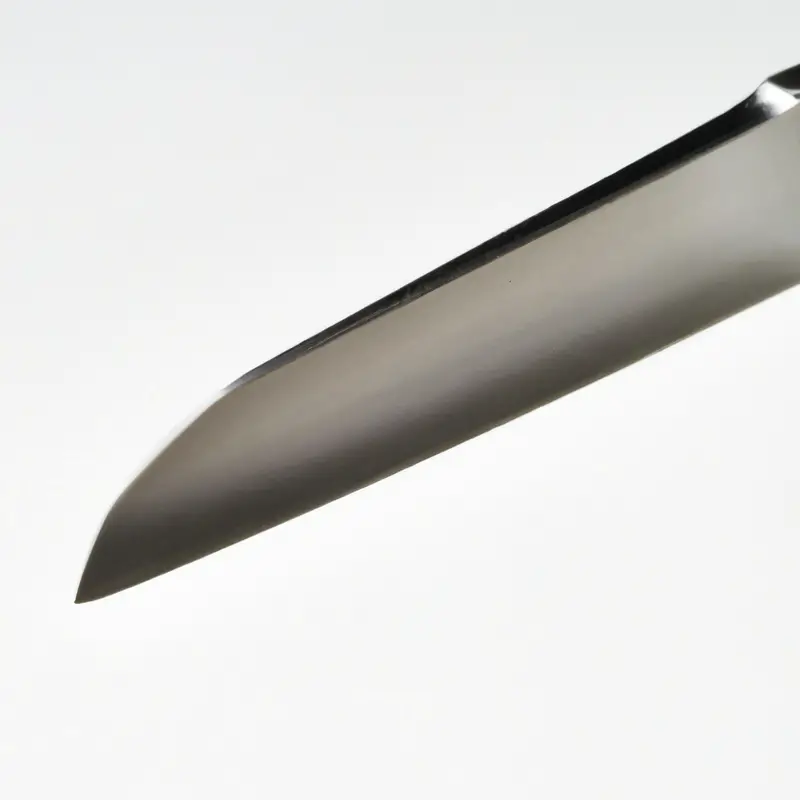
Handle protection accessories and their effectiveness
Handle protection accessories include products such as handle guards, sleeves, wraps and covers. These products are designed to protect the handle from damage during storage, transportation and use.
While they can provide effective protection, their effectiveness depends on the type of accessory and the material used.
Handle guards and sleeves are made of various materials such as plastic, silicone, leather or neoprene. These are useful for preventing scratches, dings and other forms of damage during storage and transportation.
However, they may not provide adequate protection during use as they can slip or slide during cutting or chopping.
Handle wraps, on the other hand, provide more grip and stability during use. They can also protect against moisture and heat, reducing the risk of damage.
However, they may be more difficult to clean and maintain over time.
Handle covers are also effective in protecting the handle from damage. These are typically made of hard plastic or leather and can withstand more severe impacts.
They also provide a tighter fit than sleeves or guards, reducing the risk of slipping.
However, they may add extra weight to the knife, affecting its balance and maneuverability. Overall, handle protection accessories can be effective in preventing handle damage, especially during storage and transportation.
However, their effectiveness during use may vary depending on the type of accessory and the material used.
When choosing a handle protection accessory, consider the type of knife, the intended use, and the properties of the accessory material.
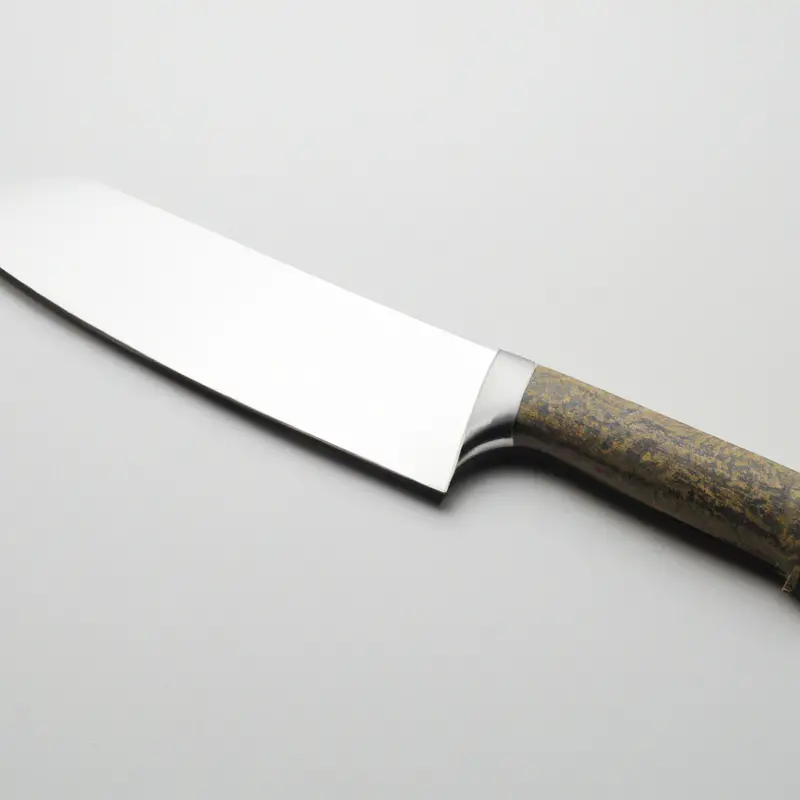
Final Verdict
Protecting the handle of your Gyuto knife is crucial to maintaining its optimal performance and longevity. Understanding the differences in handle materials and choosing the right handle for your needs can go a long way in preventing damage.
By handling and storing your knife with care, cleaning and maintaining the handle regularly, and seeking professional repairs when necessary, you can extend the lifespan of your beloved Gyuto knife.
Remember, a well-maintained handle not only protects your investment but also guarantees your safety in the kitchen. By implementing the tips and advice outlined in this article, you can ensure that your Gyuto knife handles serve you well for years to come.

